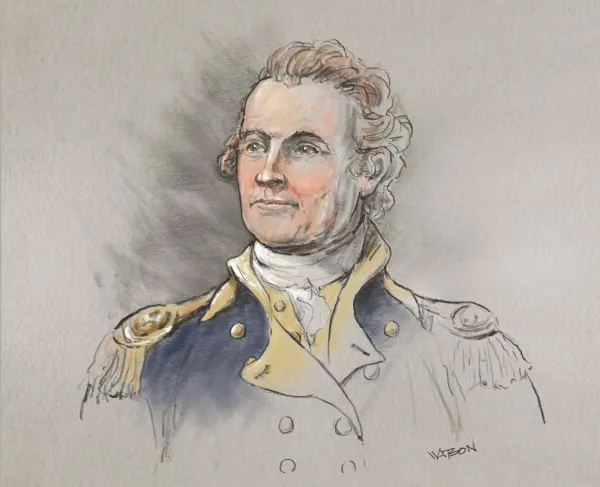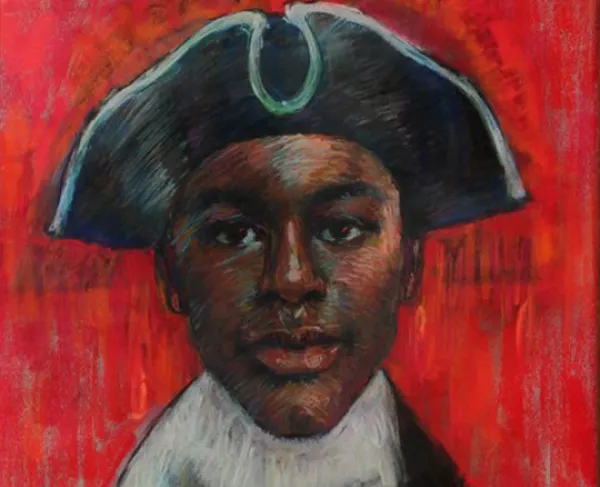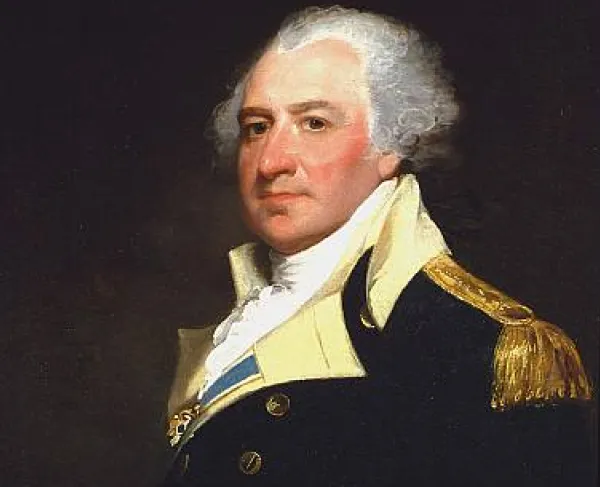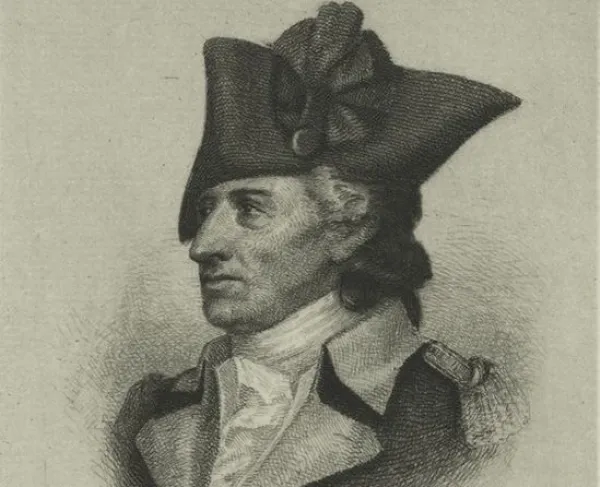John Glover

John Glover was born November 5, 1732 in Salem, Massachusetts. When his father who was a house carpenter died, four-year-old John, his mother, and three brothers moved to Marblehead, Massachusetts. Here, John grew up in the coastal town and its port where he began his trades of fisherman and international merchant, eventually owning his own ship.
Due to his financial success and influence, he became a leading Whig in the Marblehead community. As disagreement between the British Crown and her American colonists increased, Glover became active both politically and militarily. He joined the town militia and even became its commander on May 19, 1775.
Glover and his unit marched to Boston to participate in the siege starting in June 1775. General Washington chartered Glover’s ship Hannah to raid British shipping, becoming one of the first ships of the not yet formed Continental Navy. More importantly, the Marblehead militia became the 14th Continental Regiment, sometimes called the “amphibious regiment” which Glover eventually increased to nearly 500 men. Washington coined this regiment as soldiers “bred to the sea” because its numbers composed mostly of seamen, mariners, and fisherman. Their nautical skills would come in handy during the Battle of Long Island and the crossing of the Delaware to Trenton. Along with their nautical skills, the 14th regiment was also integrated, with Native American, African American, Spanish, and Jewish volunteers marching, fighting, and rowing together.
At the Battle of Long Island in August 1776, Glover and his regiment played a key role. With the Continental Army near trapped by the British army, the 14th regiment evacuated the Continentals across the East River in a surprise nighttime operation, saving them from entrapment and allowing the Revolution to live on. The second and most famous of the regiment’s action came later in that year on Christmas night: rowing Washington’s army across the Delaware to surprise the Hessian garrison at Trenton, New Jersey. This would be the regiment’s final act of the war.
After Trenton, Glover went home to tend to business affairs and his sick wife. He initially turned down a promotion to brigadier general but accepted and returned in the summer of 1777 at the personal appeal of Washington. He served with General Schuyler in the Saratoga campaign, joined the attack of the British encampment at Saratoga with General Horatio Gates and escorted the prisoners of General Burgoyne’s army back to Cambridge, Massachusetts. Glover and his brigade joined Washington at Valley Forge later that year. In June 1778, he was assigned to Fort Arnold at West Point to oversee construction. Aside from taking part in the Battle of Rhode Island, Glover remained at West Point for the rest of the war.
After Cornwallis’s surrender at Yorktown, General Glover was ordered to Massachusetts to muster recruits, but due to failing health he retired from the army and moved to Glover Farm on the border of Marblehead. The Marquis de Lafayette visited him in 1784, and George Washington also stopped at Marblehead during his tour of the United States in 1789. Glover had a political career, serving local offices including six terms as a town selectman, a delegate to the state convention that ratified the U.S. Constitution in 1788, and a two-term member of the Massachusetts House of Representatives.
John Glover passed away on January 30, 1797. (His death is commemorated by Glover’s Regiment, a group of reenactors, who produce a small ceremony.) Glover was laid to rest in a brick tomb at Old Burial Hall in Marblehead.
Related Battles
5
905





